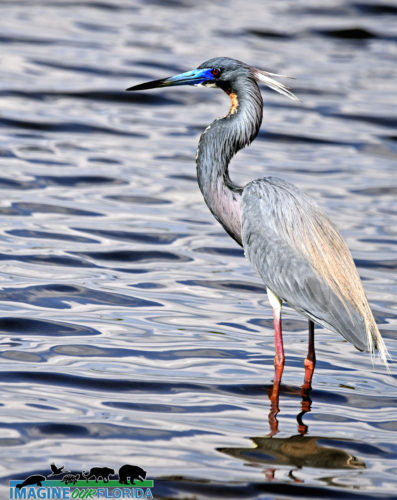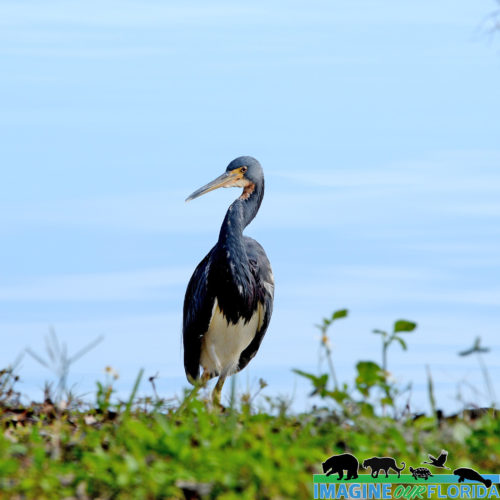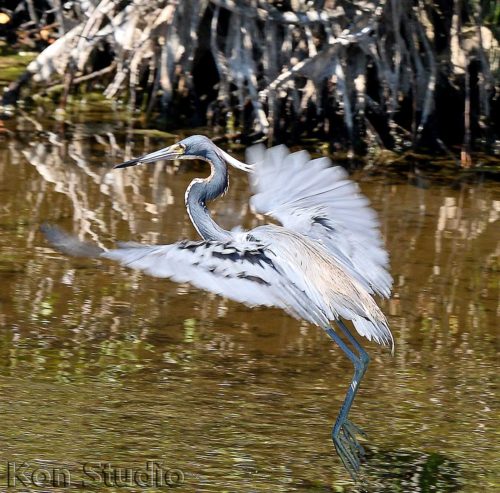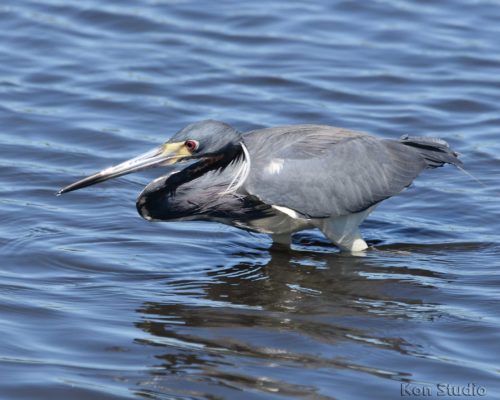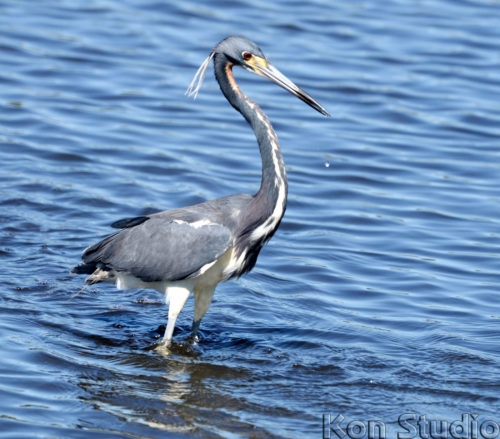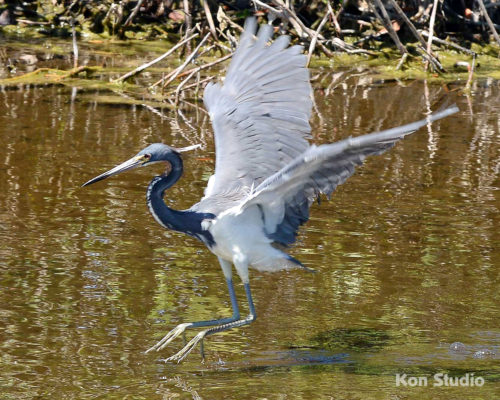Tri-colored Heron (Egretta tricolor) is a sleek and slender bird with a daggerlike bill. They have a long thin neck that curves up to their small head. The Tri-colored heron is a medium size bird that measures up to 23.6-27.6 inches with a wingspan of 37.4 inches and weighs about 14.6 oz. It is a colorful bird with a mixture of blue-gray, lavender, and white. Unlike other dark herons, they have a white belly.
On the Atlantic coast, they will migrate south, whereas on the gulf coast, they remain year-round, though some may migrate further south. Tri-colored Herons can be found in coastal areas and freshwater marshes, lake edges, canals, and ditches during the non-breeding seasons. During breeding seasons, they will use coastal estuaries, salt marshes, mangroves, and lagoons, though they typically breed on islands with small trees or shrubs. Breeding birds have small white plumes extending from the back of the head, a bright blue patch of skin around the bill, and pink legs. Nonbreeding birds lack the colors of breeding birds and have yellow legs. Juveniles have rusty necks and rusty-edged feathers.
These birds forage for small fish, such as topminnows and killifishes, in open or semi-open brackish wetlands. To capture these small fish, they will stalk, chase, and stand and wait. Unlike other heron species, the Tri-colored Heron foraging style is much more active as they will chase after fish with wings flapping. They usually forage alone or at the edge of flocks of wading birds. Despite being solitary foragers, they do nest in colonies, often with other herons and egrets.
Males are aggressive if others come close to their nest site, though females can enter during courtship. Once paired, they formed a monogamous bond for the breeding season and perhaps longer. Males collect twigs for the female, who will rearrange them for the best, making it a bulkier platform. There will typically be about 3-5 eggs in a clutch though only one young typically hatch. Eggs are pale greenish blue. The incubation period is about 21-24 days. Young can leave the nest after 17-21 days after hatching.
Tri-colored Herons are common with a stable population from 1966 to 2015, according to the North American Breeding Bird Survey, though the status of this species differs by state and region. In the central Everglades in Florida, the number of breeding pairs decreased by 75% from 1996 to 2002 and 2007 to 2010, listing the Tricolored Heron as a state threatened by the Florida Fish and Wildlife Conservation Commission. Reduced freshwater flows in the Everglades are likely responsible for population declines there. In other areas, habitat loss may be contributing to declines but increases in aquaculture farming along the coast can also place Tricolored Herons at greater risk of being shot or falling victim to bird repelling techniques. Still, in other areas, increases in artificial wetland habitat through dredging may benefit Tricolored Herons by providing additional nesting locations.

